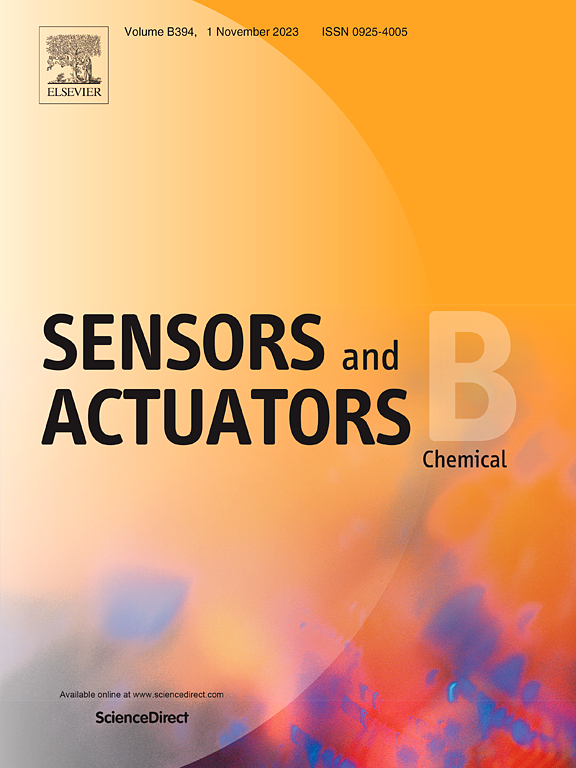Evaluation and reduction of matrix effect by deep eutectic solvents in lateral flow assays: A case study for zearalenone detection in different food matrices
IF 8
1区 化学
Q1 CHEMISTRY, ANALYTICAL
引用次数: 0
Abstract
The food samples with high-fat content could induce matrix effects and interfere with the accuracy of lateral flow immunoassays (LFA), while deep eutectic solvents (DESs) as the innovative extraction solution had great potential to decrease this effect by rational design. First, 24 samples were evaluated for the detection performance of LFA using zearalenone (ZEN) as the target, and we found that black sesame, pecan, cashew, and pistachio with high-fat content could seriously affect recoveries and limit of detection (LOD), generating high matrix effects. To address this issue, six DESs with different polarities were designed by arrangement of two hydrogen bond donors and three hydrogen bond acceptors. DES-4, composed of betaine and ethylene glycol with a molar ratio of 1:4, displayed a lower molecular polarity index, which was similar to ZEN and possessed significant differences with fatty acids. Subsequently, DES-4 was applied to LFA for ZEN detection in these four high-fat matrices. After centrifugation, 70.5 %-92.3 % of fat in food matrices was transferred to the upper layer, and the fat content of the detection phase and food matrices phase by DESs extraction was 77.0–290.2 mg, obviously lower than that by acetonitrile/water extraction. Moreover, the recoveries ranged from 82.01 % to 114.26 % after diluting 50–70 times, and the LODs were 1.72–4.06 ng/mL, which were 1.4–4.6 times lower than that of acetonitrile/water extraction. Hence, DESs were considered as promising extraction reagents to reduce the high fat-induced matrix effects, which may be broadened to other target detection.
深层共晶溶剂在横向流动测定中基质效应的评价和降低:以不同食品基质中玉米赤霉烯酮检测为例
高脂肪含量的食品样品会诱发基质效应,影响横向流动免疫测定(LFA)的准确性,而深度共晶溶剂(DESs)作为创新的提取溶液,通过合理的设计,有很大的潜力来降低这种影响。首先,以玉米赤霉烯酮(ZEN)为目标,对24个样品的LFA检测性能进行了评价,发现高脂肪含量的黑芝麻、山核桃、腰果和开心果会严重影响回收率和检出限(LOD),产生高基质效应。为了解决这一问题,通过两个氢键给体和三个氢键受体的排列,设计了六个具有不同极性的DESs。由甜菜碱和乙二醇摩尔比为1:4组成的DES-4具有较低的分子极性指数,与ZEN相似,与脂肪酸有显著差异。随后,将DES-4应用于LFA,对这四种高脂基质进行ZEN检测。离心后,食品基质中70.5 %-92.3 %的脂肪被转移到上层,DESs萃取检测相和食品基质相的脂肪含量为77.0-290.2 mg,明显低于乙腈/水萃取。稀释50 ~ 70倍后,加样回收率为82.01 % ~ 114.26 %,检出限为1.72 ~ 4.06 ng/mL,比乙腈/水萃取法低1.4 ~ 4.6倍。因此,DESs被认为是一种很有前途的提取试剂,可以减少高脂肪诱导的基质效应,并可能扩大到其他目标检测。
本文章由计算机程序翻译,如有差异,请以英文原文为准。
求助全文
约1分钟内获得全文
求助全文
来源期刊

Sensors and Actuators B: Chemical
工程技术-电化学
CiteScore
14.60
自引率
11.90%
发文量
1776
审稿时长
3.2 months
期刊介绍:
Sensors & Actuators, B: Chemical is an international journal focused on the research and development of chemical transducers. It covers chemical sensors and biosensors, chemical actuators, and analytical microsystems. The journal is interdisciplinary, aiming to publish original works showcasing substantial advancements beyond the current state of the art in these fields, with practical applicability to solving meaningful analytical problems. Review articles are accepted by invitation from an Editor of the journal.
 求助内容:
求助内容: 应助结果提醒方式:
应助结果提醒方式:


